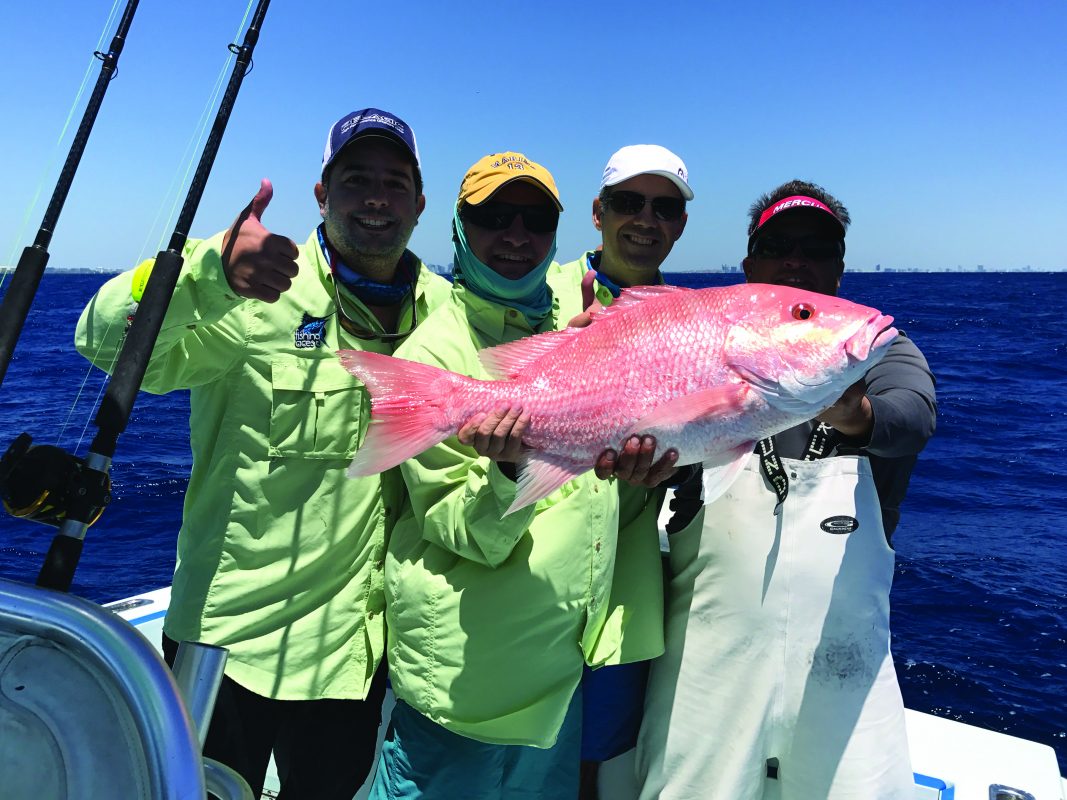June is usually that time of the year where we put away the kites and bring our the spinning rods and bottom fishing gear. Most summer trips involve either mahi fishing or bottom fishing and on many days we actually do both. One of the biggest issues with dolphin fishing is that they aren’t always around and fishing can be a case of feast or famine. It is during these periods that the bottom fishing really comes into play.
Bottom fishing can come in several ways. One of my favorite ways to bottom fish is to anchor up around a nice reef or wreck and chum, chum, and chum. Heavy chumming usually creates some sort of action. In shallower areas from 40’-70’ of water, yellowtail and mangrove snappers are the norm. Yellowtails usually bite day or night but mangroves usually turn on after dark. If you’re looking for steady action this is definitely the way to go.
Another great way to bottom fish is by anchoring in deeper water from about 90’-150’ or so. While the quantity of fish caught will probably suffer a bit, the size and quality of the fish will be much improved. Fishing in these depths will give you shots at mutton snapper, black grouper, gag grouper, and flag yellowtails. The two things that remain the same is that you will need lots of chum, fresh, and or live bait. Most of the larger fish will be caught at or near the bottom, while yellowtails continue to be suspended at the mid depths.
If anchoring isn’t your cup of tea, you can try deep dropping with a single live bait or a chicken rig. Most of this fishing is done from 160’ to 700’ depending on what you’re targeting. Chicken rigs or hi-low rigs as they are sometimes called, will always get more bites but the live bait will usually produce the bigger trophy fish. Also, unlike methods involving chumming, dropping deep will require a pretty decent bottom sounder capable of marking structure, fish schools, and individual fish. The idea here is to find a good looking area and try to hover over it with the aid of the motor also know as power drifting.
Exactly which method you use depends largely on two things. The first is preference, it isn’t fun unless you enjoy doing it. Second, is conditions and current. I usually fish deeper with little to no current and shallower when the current is strong. Successful fishing literally involves a “go with the flow” attitude. You have to take what nature gives you and make the most of it.
Well, that’s pretty much it for right now. I will be conducting several fishing seminars at the Bass Pro Shops in Miami. Topics, dates, and times will be announced both on my FACEBOOK page and website.
Also, don’t forget that you can keep up with all of the action by following us on FACEBOOK, Instagram, and Twitter. If you like watching some of the action, be sure to check out my YOUTUBE page for the latest video additions.
Tight Lines,
Capt. Orlando Muniz
Nomad Fishing Charters
www.fishingchartermiami.com
(786) 266-0171
Sponsors and friends: Mercury Marine, Bass Pro Shops, Offshore Angler, Tracker Marine, Gray Taxidermy, Baitmasters, Orca Coolers, SeaDek, Costa Del Mar, and Yo-Zuri.
